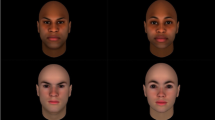Abstract
The lineup identification of a suspect is often a critical stage in a criminal investigation. One factor which may affect the fairness of a lineup is bias on the part of the person constructing the lineup. the “own-race bias,” the tendency of individuals to perceive more similarity in the appearance of other-race members than in their own, may affect lineup development. Black subjects and white subjects were asked to construct lineups using both black and white “suspects.” On three of four measures, their behavior was very similar while making white lineups but different on black lineups. Relative to their performance on white lineups, white subjects became less selective on black lineups but black subjects became even more selective on black lineups. Both groups displayed own-race bias by being more selective about own-race photos than other-race photos. This lessening of selectivity may make lineups constructed by cross-race lineup constructors less fair than lineups constructed by own-race lineup constructors.
Similar content being viewed by others
References
Barkowitz, P. & Brigham, J. C. Recognition of faces: Own-race bias, incentive, and time delay.Journal of Applied Social Psychology, 1982,13, 255–268.
Brigham, J. C. Perspectives on the impact of lineup composition, race and witness confidence on identification accuracy.Law and Human Behavior, 1980,4, 315–322.
Brigham, J. C. Race and eyewitness identifications. In S. Worchel and W. G. Austin (Eds.),Psychology of Intergroup Relations (2nd ed.). Chicago: Nelson Hall (1985), pp. 260–282.
Brigham, J. C. & Barkowitz, P. Do “they all look alike?” The effect of race, sex, experience, and attitudes on the ability to recognize faces.Journal of Applied Social Psychology, 1978,8, 306–318.
Brigham, J. C., Maass, A., Snyder, L. D. & Spaulding, K. The accuracy of eyewitness identifications in a field setting.Journal of Personality and Social Psychology, 1982,42, 673–681.
Buckhout, R. Eyewitness testimony.Scientific American, 1974,321, 23–31.
Buckhout, R., Figuero, D. & Hoff, E. Eyewitness identification: Effects of suggestion and bias in identification from photographs.Bulletin of the Psychonomic Society, 1975,6(1), 71–74.
Cross, J. F., Cross, J. & Daly, J. Sex, race, age, and beauty as factors in recognition of faces.Perception and Psychophyics, 1971,10, 393–396.
Doob, A. N. & Kirschenbaum, H. M. Bias in police lineup-partial remembering.Journal of Police Science and Administration, 1973,1, 287–293.
Feingold, G. A. The influence of environment on identification of persons and things.Journal of Criminal Law and Police Science, 1974,5, 39–41.
Lindsay, R. C. L., & Wells, G. L. What price justice? Exploring the relationship of lineup fairness to identification accuracy.Law and Human Behavior, 1980,4, 303–313.
Lindsay, R. C. L., Wells, G. L., & Rumpel, C. M. Cross-racial eyewitness identifications: It may be better if they “all look alike.” Unpublished manuscript, University of Alberta, 1980.
Linville, P. W., & Jones, E. E. Polarized appraisals of outgroup members.Journal of Personality and Social Psychology, 1980,38(5), 689–703.
Luce, T. S. Blacks, whites, and yellows: They all look alike to me.Psychology Today. November 1974, 105–108.
Malpass, R. S., & Kravitz, J. Recognition of faces of own-and other-race.Journal of Personality and Social Psychology, 1969,12, 330–334.
Quattrone, G. A., & Jones, E. E. The perception of variability within in-groups and out-groups: Implications for the law of small number.Journal of Personality and Social Psychology, 1980,38, 141–152.
Wells, G. L., Leippe, M. R. & Ostrom, T. M. Guidelines for empirically assessing the fairness of a lineup.Law and Human Behavior, 1975,3, 285–293.
Wells, G. L., & Lindsay, R. C. L. On estimating the diagnosticity of eyewitness nonidentifications.Psychological Bulletin, 1980,88, 776–784.
Author information
Authors and Affiliations
About this article
Cite this article
Brigham, J.C., Ready, D.J. Own-race bias in lineup construction. Law Hum Behav 9, 415–424 (1985). https://doi.org/10.1007/BF01044480
Issue Date:
DOI: https://doi.org/10.1007/BF01044480




